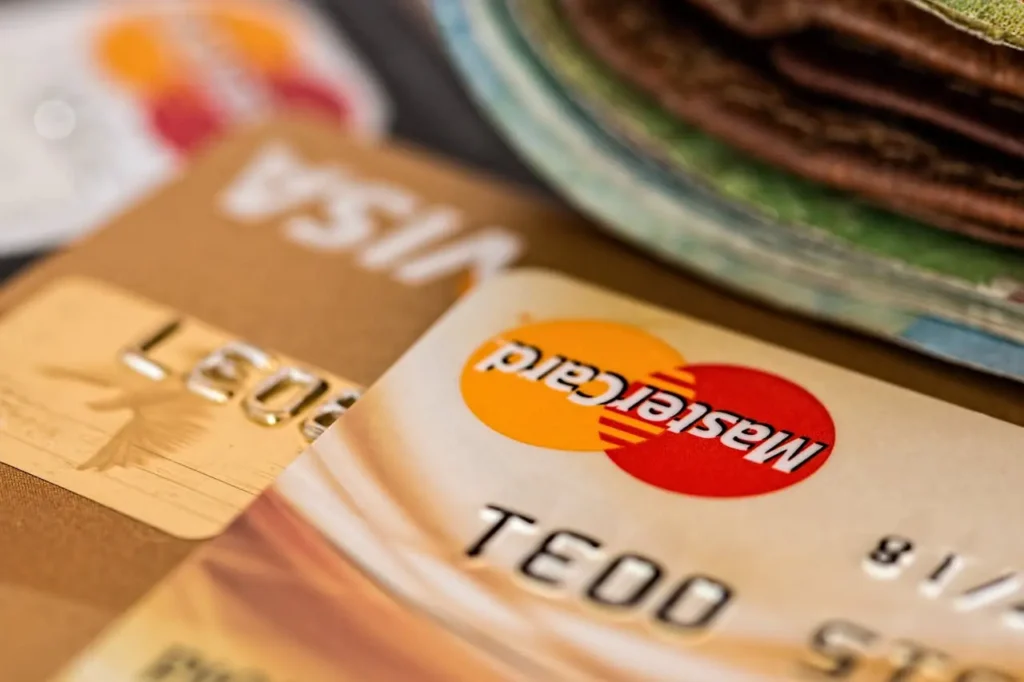Table of Contents
ToggleIntroduction to Eliminating Credit Card Debt
Credit cards offer convenience, rewards, and the ability to build credit—but they can also lead to serious financial stress if debt spirals out of control. According to the Federal Reserve, Americans carry over $1 trillion in credit card debt. If you’re among those looking for realistic, sustainable strategies to become debt-free, this guide is for you.
Why Paying Off Credit Card Debt Matters
Carrying credit card debt affects more than your wallet. It impacts your credit score, borrowing ability, and even your emotional health. One of the most critical elements of your FICO credit score is your credit utilization ratio—how much of your available credit you’re using. Experts recommend keeping this below 30%. So, if you have a $10,000 credit limit, your balances should ideally stay under $3,000.
Failing to manage your balances can lead to:
Denied loan applications
Higher interest rates on mortgages and auto loans
Increased insurance premiums
Difficulty securing a rental lease or job (in certain industries)
Additionally, high-interest charges eat into your budget. Unlike mortgage or student loan interest, credit card interest isn’t tax-deductible, making it purely a financial drain.
How Credit Card Interest Really Works
Credit card companies assign you a credit limit and track your purchases. At the end of each billing cycle, you receive a statement with a minimum payment due, usually 1%–3% of your balance plus fees and interest.
If you only pay the minimum:
Your remaining balance rolls over
New interest accrues daily (compounding effect)
You’ll pay interest on the interest
💡 Example: A $5,000 credit card balance at 20% annual percentage rate (APR), with only minimum payments made, can take over 20 years to pay off and cost nearly $13,000 in interest.
7 Smart Steps to Get Out of Credit Card Debt

Image credit: Freepik
Here’s how to pay off credit card debt effectively without sacrificing your lifestyle:
1. Organize Your Debts
List all your credit cards with:
Balances
Interest rates
Minimum payments
This gives you a clear picture of what you’re facing.
2. Choose a Payoff Strategy: Avalanche vs. Snowball
Avalanche Method: Pay off cards with the highest interest rate first. Saves the most money over time.
Snowball Method: Pay off smallest balances first for psychological wins and momentum.
Both work. Choose the one you’ll stick with.
3. Negotiate a Lower Interest Rate
Call your credit card company and request a lower APR, especially if you have a strong payment history. It doesn’t always work—but when it does, it can save hundreds or thousands.
4. Transfer Your Balance (Carefully)
Look for a 0% APR balance transfer credit card. These often come with an introductory period of 12–18 months.
Watch out for:
Balance transfer fees (3%–5%)
High post-intro APR
Missed payment penalties
5. Avoid New Debt
Freeze your spending on credit cards. Use cash, debit cards, or budgeting apps like YNAB, EveryDollar, or Mint to stay disciplined.
6. Automate Payments Above the Minimum
Set up automatic payments that exceed the minimum requirement. Even an extra $50/month can shave years off your payoff timeline.
7. Consider Debt Consolidation or a Personal Loan
If your credit score is decent, a low-interest personal loan can consolidate multiple card balances. This simplifies repayment and reduces total interest paid.
💡 Bonus: A personal loan is an installment loan, which can positively diversify your credit mix and help your score.
When to Get Professional Help
If your debt is unmanageable despite efforts:
Contact a nonprofit credit counseling agency like the National Foundation for Credit Counseling (NFCC) or Money Management International.
Explore debt management plans (DMPs), which may reduce interest rates and combine multiple payments into one.
Avoid debt settlement scams promising to wipe out your debt for “pennies on the dollar.”
Don't Fall for These Myths
“Carrying a balance boosts your credit.” False. Paying your bill in full and on time is best.
“You need to use your card every month.” Not true. Just keep the account active.
“I’ll never get out of debt.” With the right strategy, thousands do every day.
Final Thoughts: Becoming Debt-Free Is Possible
Credit card debt can be overwhelming, but it’s not permanent. With discipline, planning, and the right tools, you can take back control. Whether you use the avalanche or snowball method, just start. Every extra dollar counts—and brings you closer to financial freedom.
Frequently Asked Questions (FAQ)
What is the most effective way to pay off credit card debt fast?
The most effective way to pay off credit card debt fast is to use either the avalanche method or the snowball method, depending on your personal motivation style. The avalanche method targets high-interest balances first, helping you save the most money on interest in the long run. The snowball method, on the other hand, prioritizes paying off the smallest balances first, which can provide psychological momentum and motivation to stick with your debt payoff plan. Regardless of the strategy you choose, consistently paying more than the minimum and avoiding new debt are essential to accelerating your payoff timeline.
How does credit card interest work?
Credit card interest is typically calculated using a daily periodic rate, which is applied to your average daily balance. When you carry a balance past the due date, your credit card issuer charges interest on the unpaid amount, and the interest compounds—meaning you may also pay interest on previous interest. This compounding effect can significantly increase your total repayment cost over time. For example, making only minimum payments on a $5,000 balance with a 20% APR could take more than 20 years to pay off and cost you over $13,000 in interest.
Does carrying a credit card balance help your credit score?
No, carrying a credit card balance does not improve your credit score. In fact, it can hurt it if your credit utilization ratio—the percentage of available credit you’re using—is too high. The best way to build and maintain a strong credit score is to pay your credit card balance in full and on time every month. This shows responsible usage and avoids costly interest charges. A lower utilization rate, ideally below 30%, is more favorable in the eyes of credit scoring models like FICO.
Should I use a balance transfer to pay off credit card debt?
A balance transfer can be a smart way to pay off credit card debt—especially if you qualify for a 0% introductory APR offer. These offers typically last between 12 and 18 months, allowing you to pay down the principal without accruing interest during that period. However, you should watch out for balance transfer fees, which are often 3% to 5% of the amount transferred, and be cautious of high interest rates that apply after the intro period ends. Also, make sure to avoid missed payments, which can void the promotional rate.
Can a personal loan help consolidate credit card debt?
Yes, a personal loan can help consolidate high-interest credit card debt into one lower-interest monthly payment. This can simplify your finances and potentially reduce the total interest you pay over time. Additionally, because personal loans are installment loans rather than revolving credit, they may help diversify your credit mix—a factor that can positively affect your credit score. Just ensure the loan has a favorable interest rate and no hidden fees, and that you’re committed to not racking up new credit card debt after consolidating.
What should I do if I can’t manage my credit card debt on my own?
If your credit card debt feels overwhelming and you’re unable to manage it on your own, consider contacting a nonprofit credit counseling agency, such as those affiliated with the NFCC. These professionals can help you create a personalized action plan or set up a DMP to consolidate payments and reduce interest rates. Be wary of for-profit debt settlement companies that promise to eliminate your debt for pennies on the dollar—they often charge high fees and can damage your credit even further.
How much should I pay each month on my credit cards?
While you’re only required to make the minimum payment, doing so will keep you in debt for years and cost thousands in interest. Instead, aim to pay as much above the minimum as possible—ideally the full balance. If that’s not feasible, consider automating an amount that’s at least $50 to $100 more than the minimum. This helps reduce your principal faster and shortens your debt payoff timeline significantly. Even small extra payments add up and can save you years of interest.
Is credit card debt worse than other types of debt?
Yes, credit card debt is generally more harmful than many other types of debt due to its high interest rates and revolving nature. Unlike mortgages or student loans, which may have tax-deductible interest or lower rates, credit card interest compounds quickly and is not tax-deductible. Additionally, it has a more immediate impact on your credit score through your credit utilization ratio. Left unchecked, it can lead to long-term financial consequences and limit your ability to qualify for loans or even rent housing.
Can credit card debt affect your ability to get a mortgage or car loan?
Yes, carrying high balances on credit cards can hurt your debt-to-income ratio and credit score—two key factors lenders evaluate when approving loans. A high utilization rate or missed payments can result in loan denials or higher interest rates on future borrowing. Some lenders may also view excessive credit card debt as a sign of financial instability, which could delay your plans to buy a home or car until the debt is under control.
What is the best way to avoid falling back into credit card debt?
To avoid falling back into credit card debt, create a realistic monthly budget, use cash or debit cards for everyday purchases, and only charge what you can afford to pay in full each month. It also helps to use budgeting apps like YNAB or EveryDollar to track spending. Set up automatic payments to avoid missed due dates and keep your credit healthy. Once your debt is paid off, consider keeping one low-limit card open to maintain your credit history while resisting the temptation to overspend.
Featured image credit: Sora Shimazaki (Pexels)


